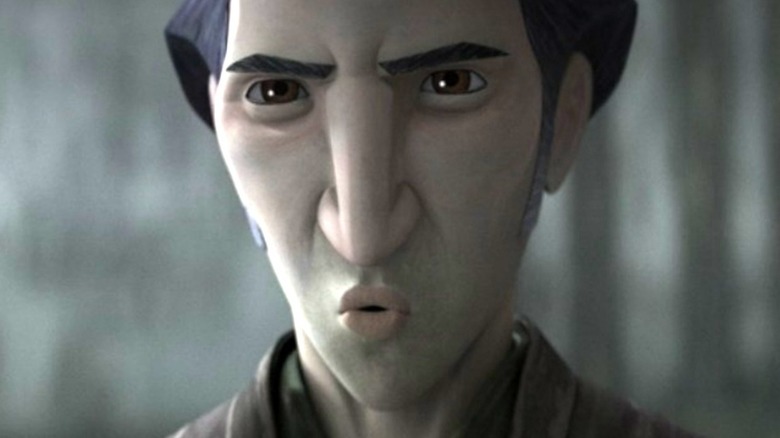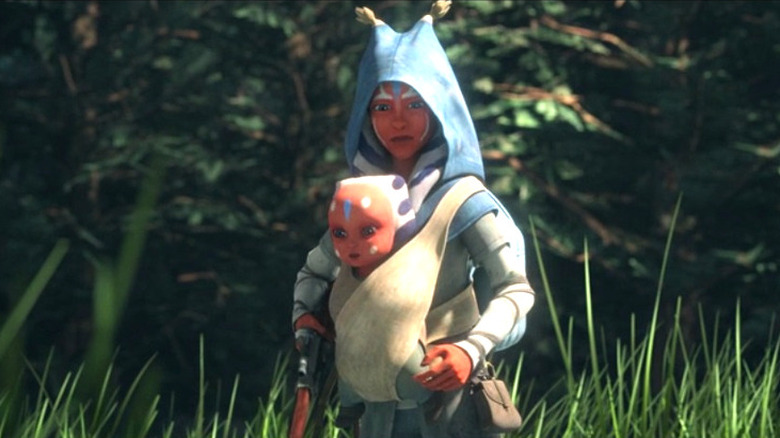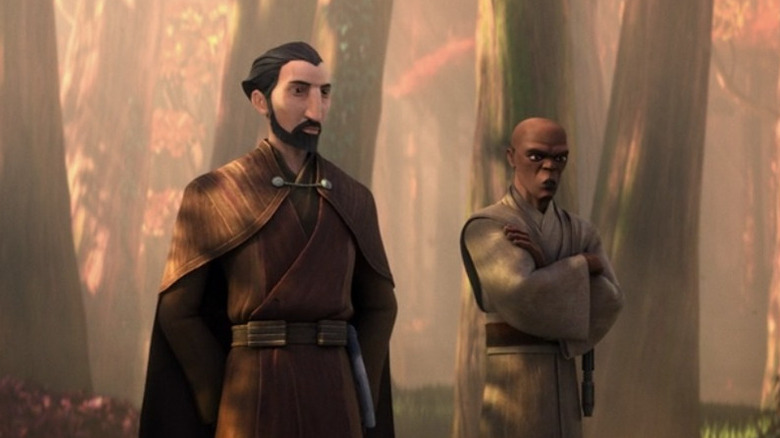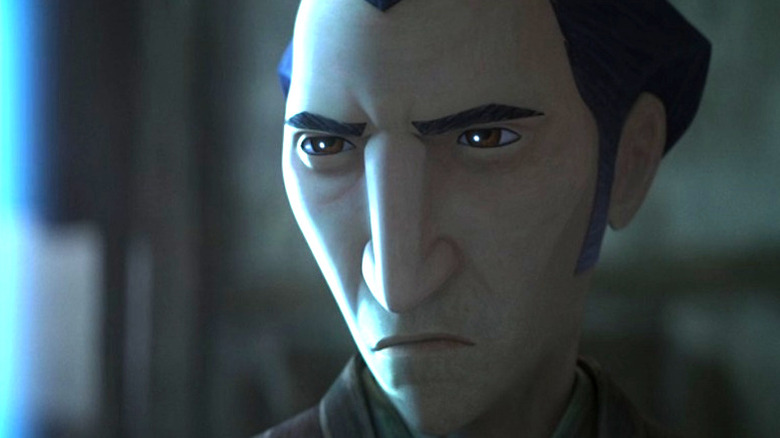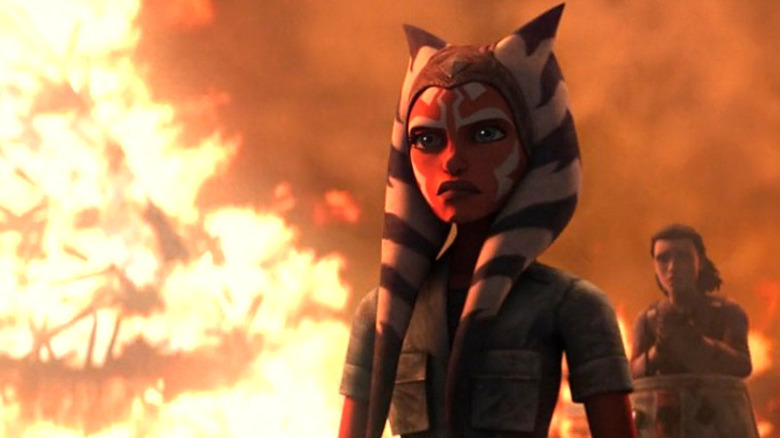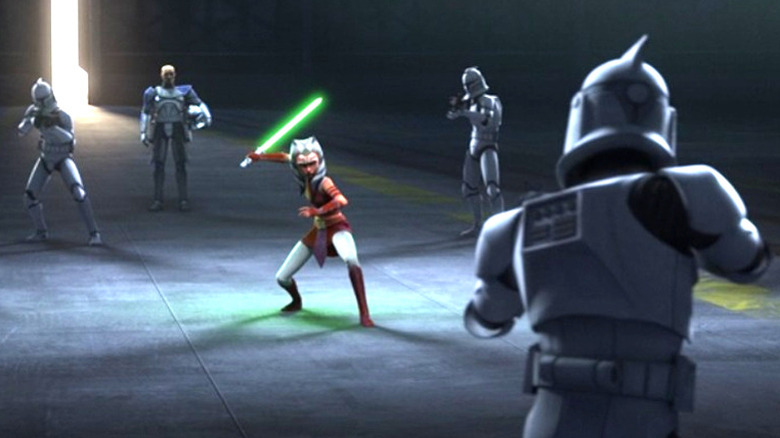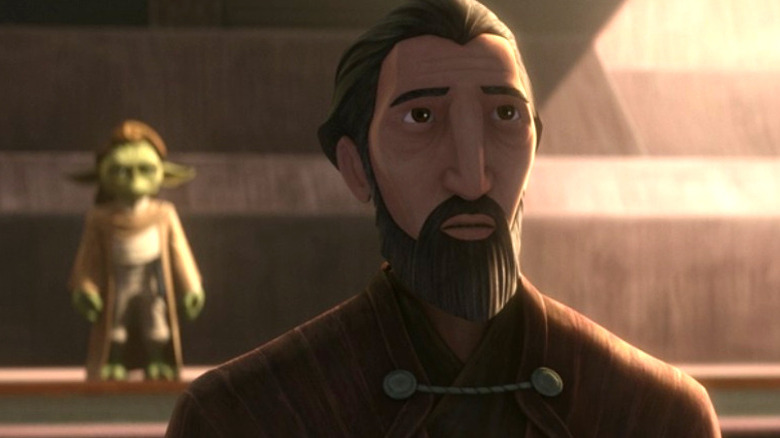Every Star Wars: Tales Of The Jedi Episode Ranked
Ever since Disney purchased Lucasfilm, we have been getting new movies and television shows (not to mention all the books, comics, and video games) that explore the "Star Wars" universe in more depth than ever before. Yes, "Star Wars: The Clone Wars" has been doing this for years, but with the Lucasfilm acquisition, Disney has endeavored to create a more comprehensive view of a galaxy far, far away across multiple platforms.
Although there have been live-action shows like "The Mandalorian," "The Book of Boba Fett," and "Obi-Wan Kenobi," it's still in animation where the nuts and bolts that keep the "Star Wars" universe together are explored in fascinating and even experimental ways. All the concepts that are a little too grand and cosmic for the mainline "Star Wars" stories can be fully realized in the animation-sphere.
With "Star Wars: Tales of the Jedi," however, something of a happy medium is struck. While it does give us new insights into the lives of Ahsoka Tano and future Sith Lord Count Dooku, they are more grounded stories rooted in the emotions of the characters rather than the deep lore surrounding them. Therefore, if you've never seen any piece of animated "Star Wars" media, "Tales of the Jedi" should serve as an excellent jumping-off point.
Each episode has its own strengths and weaknesses, but some outshine the others, so we have ranked all six of them below.
6. Life and Death
Instead of getting the series started with epic action, "Star Wars: Tales of the Jedi" kicks things off with a quiet, almost meditative episode that reveals the very beginning of Ahsoka Tano's life. Although the animation is absolutely stunning (feeling more cinematic than most modern live-action movies) and the moderate pace gradually pulls you into the world, the plot itself is a little too derivative to be rewarding. As such, premier episode "Life and Death" ranks the lowest.
The episode shows us a village at night on the planet Shili, where a new father excitedly informs his neighbors that his daughter has just been born. We then get our first look at newborn Ahsoka Tano, a character who would go on to appear in "Star Wars: The Clone Wars," "Star Wars Rebels," and "The Mandalorian" — in addition to getting her own series. What's great about this is we're shown that Ahsoka is surrounded by love, which is comforting when considering the dark turns her life will later take.
The bulk of the action revolves around a rite of passage where Ahsoka's mother takes her hunting to give her a working understanding of life and death. Again, these scenes are gorgeous, but the central conceit is a little cliche. Also, Ahsoka is a baby who is just barely comprehending what she's seeing. Plus, you can see the final moment coming a mile away. Despite all that, it's definitely worth watching.
5. Choices
Right in the middle of the series is a trilogy of episodes that chronicle Count Dooku's growing disillusionment with both the Republic and the Jedi Order's role within it. Count Dooku had an enormous presence when we first met him in "Star Wars: Attack of the Clones" (thanks in large part to Christopher Lee's magnetic performance), but he was killed so early in "Star Wars: Revenge of the Sith" that we never got the chance to know him. Thankfully, "Star Wars: The Clone Wars" made huge strides into fleshing out his character.
These episodes go even further by showing us the exact moments that his allegiance to the Jedi faltered. The middle chapter of the trilogy, "Choices," is by far the weakest of the three because it feels like a truncated episode of "The Clone Wars" and the plot is almost a carbon copy of the episode immediately preceding it. Once again, though, the episode looks absolutely incredible.
In "Choices," Dooku and Mace Windu arrive at a planet to investigate the suspicious circumstances around a fellow Jedi's death. The episode isn't really about the mystery, however. It's more interested in Dooku's methods of investigating and his reaction to the truth than it is in the plot twists themselves. Had the plot been about anything else, it probably would have ranked higher. Unfortunately, the similarities between it and the previous episode weigh the whole thing down. That said, it's still well worth watching to garner a greater perspective on why the Clone Wars happened.
4. Justice
"Justice" may be the second episode of the series, but it's the first in the trilogy of Dooku episodes. We see Dooku and his young apprentice Qui-Gon Jinn arrive on a planet searching for the kidnapped son of a very important senator of the Republic. When they land, they discover that the area is neglected and the residents are poor and desperate. The Jedi soon learn that the locals all conspired to kidnap the senator's son to send him a message.
Right away, this episode's tone is much darker than what we've come to expect from an animated "Star Wars" series. The colors are cool, almost dull. The music is atmospheric and moody. The tavern Dooku and Qui-Gon enter to find answers is gloomy, with lighting so dim it could have come out of a noir film. The show is signaling to viewers that this isn't your typical Jedi adventure and some heavy material is going to be discussed.
The episode tackles inequality and corruption in a direct and meaningful way. No one makes broad statements about good and evil — this is a very real situation where the corruption of a greedy politician has pushed the people he's meant to serve to take extreme action. You can understand why the situation infuriates Dooku so much. If the Jedi are meant to keep the peace, why do they allow this kind of injustice to take place? It's a captivating glimpse into the character's mind that is only surpassed by a later episode.
3. Resolve
The final episode of "Star Wars: Tales of the Jedi" is also the final episode of Ahsoka's storyline within the series. While it serves up some real spectacle, it feels a little too reminiscent of the "Obi-Wan Kenobi" series to make it to the top of the list. It picks up with the ending of "Star Wars: Revenge of the Sith." As Coruscant mourns the death of Senator Amidala, Bail Organa notices Ahsoka Tano watching the funeral procession.
Bail tracks Ahsoka down and discovers that she intends to go into hiding — not that she has much choice since she is now an enemy of the Empire, like all Jedi. As she hides from clone troopers, Bail talks about how important it is to fight and to help if we are able. Then there's a time jump where Ahsoka is working on a farm of some kind, helping to stack bales of hay to be sold at the market.
While she is attempting to hide her true nature, she can't help but save someone using her force abilities. Then things really pop off when an inquisitor shows up. The episode demonstrates that Ahsoka's compassion cannot be denied and she is forever doomed to put her life at risk to help others. It's all very well done, and had this not been so similar to "Obi-Wan Kenobi" it could have come in first for the scene where she confronts the inquisitor alone.
2. Practice Makes Perfect
It may not be the popular choice, but Ahsoka's second episode of "Star Wars: Tales of the Jedi" is probably her best. The concept is incredibly simple. Ahsoka, who is now a padawan, takes a test to demonstrate how well she can handle attacks from battle droids. Though she does well, her master Anakin Skywalker feels the test doesn't prove anything because droids are predictable. Wanting to prove her worth, Ahsoka agrees to take a different test designed by Anakin.
Anakin feels the best way to test a Jedi's defense capabilities is to put them up against living, breathing enemies. Top simulate that, he gets Rex and some other clone troopers to surround Ahsoka and continuously blast her until she falls. At first, her reflexes are slow, but the more often she does the test, the quicker she gets. That's about it, really. There are no big villains to fight, no battles to win — it is literally an episode all about practice.
The reason it ranks so highly is because of the message at its core — no matter how many times you fall, get back up. It also demonstrates that no one is perfect out of the gate. You're going to stumble and fail a lot before you get to a place where you're able to perform a task with real skill. Some may argue this episode is a little too simplistic, but in a world as vast and complicated as the "Star Wars" universe, sometimes simplicity should be treasured.
1. The Sith Lord
In the episode "The Sith Lord," we see the moment Dooku turns to the dark side forever — and it is haunting. The episode isn't as flashy as some of the others, and the animation isn't as immediately breathtaking, but the somber tone is captivating. It begins with Dooku deleting the files regarding the planet Kamino from the Jedi databanks, as was discussed during "Star Wars: Attack of the Clones."
He hears about Qui-Gon battling a Sith and has a chat with his old padawan. There's a small time jump where Master Yaddle (voiced by Bryce Dallas Howard) asks Dooku if he will be attending Qui-Gon's funeral on Naboo. The scene is quiet and beautiful. Dooku stands below a tree, reminiscing about how he used to take Qui-Gon here as a boy. Then he says he won't be going to Naboo because it's time to let go of Qui-Gon.
Suspicious, Yaddle follows him to a secret meeting with Darth Sidious. The journey there is quick but dripping with dread. We know that Dooku is done with his old life and has been walking down the path to the dark side and the hopelessness in his voice is heartbreaking. It's also obvious that Yaddle will not survive beyond this secret meeting. The whole thing feels tragic yet inevitable and is gripping to the very end.
